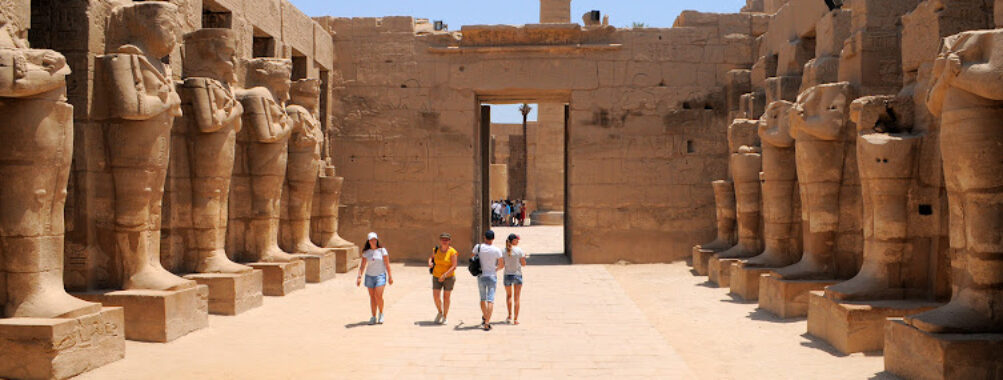
Ramesses III Temple
Table of Contents
Description
Standing as one of the most remarkable monuments of ancient Egypt, the Temple of Ramesses III at Medinet Habu commands attention with its monumental architecture and intricate decorations. This massive temple complex serves as both a memorial temple and a gateway to understanding the might of ancient Egyptian civilization. Y’know what’s fascinating? The walls themselves tell stories through their detailed reliefs – they’re like an ancient comic book depicting Ramesses III’s military triumphs and religious ceremonies.
Key Features
• The iconic fortress-style entrance gate (migdol), which stands out with its unique Syrian-inspired architectural design
• Extraordinarily well-preserved wall reliefs showing battle scenes and religious festivals
• The first pylon, featuring massive depictions of Ramesses III smiting his enemies
• A royal palace connected directly to the temple
• Stunning colored reliefs that still retain their original pigments in some sections
• The sacred lake and temple gardens (though they’re mostly archaeological remains now)
• A nilometer used by ancient Egyptians to measure flood levels
• Second court with its remarkable columns featuring Osiride statues
• The Window of Appearances where Ramesses III would show himself to his people
Best Time to Visit
Let me tell ya – timing is everything when visiting Medinet Habu. The best months are between October and April when temperatures are more manageable. I’d particularly recommend going early morning, around 8 AM, when the light is perfect for photography and the crowds haven’t rolled in yet. Plus, the softer morning light makes those incredible reliefs pop! Avoid visiting during the summer months (June-August) unless you’re completely fine with intense heat – trust me, exploring an ancient temple in 104°F isn’t anyone’s idea of fun.
How to Get There
Getting to Medinet Habu is actually pretty straightforward. The temple sits on the West Bank of Luxor, and you’ve got several options to reach it. Most folks either hire a taxi or join a guided tour from the East Bank. If you’re feeling adventurous (like I was on my first visit), you can rent a bicycle and pedal your way there – just make sure to go early before the heat kicks in. Many visitors combine their trip with other West Bank attractions like the Valley of the Kings and the Colossi of Memnon.
Tips for Visiting
Alright, here’s the real talk about making the most of your visit. First off, wear comfortable shoes – you’ll be doing lots of walking on uneven surfaces. I learned this the hard way when I showed up in sandals my first time! Bring plenty of water and a hat – there’s limited shade once you’re inside the complex.
Try hiring a knowledgeable guide – there’s so much symbolism and history that’s easy to miss without someone explaining it. I’d say plan for at least 2-3 hours to properly explore the temple. The lighting’s best for photos in the morning or late afternoon, and the reliefs look absolutely spectacular during these golden hours.
Oh, and here’s something most guidebooks won’t tell you – the far corners of the temple complex are often overlooked but contain some of the most interesting reliefs. Take your time to explore these less-visited areas. Also, bring small bills for tips and maybe a flashlight to better see some of the darker chambers.
Don’t forget to check out the small museum on-site – it’s often bypassed but houses some fascinating artifacts. And if you’re into photography, the second court offers the most dramatic shots, especially when the sun creates interesting shadows across those massive columns.
Remember to be respectful – this isn’t just a tourist site but an ancient place of worship. And while it might be tempting to touch the reliefs (they’re so detailed!), keep those hands to yourself to help preserve this incredible piece of history for future generations.
Location
Places to Stay Near Ramesses III Temple
Find and Book a Tour
Explore More Travel Guides
No reviews found! Be the first to review!